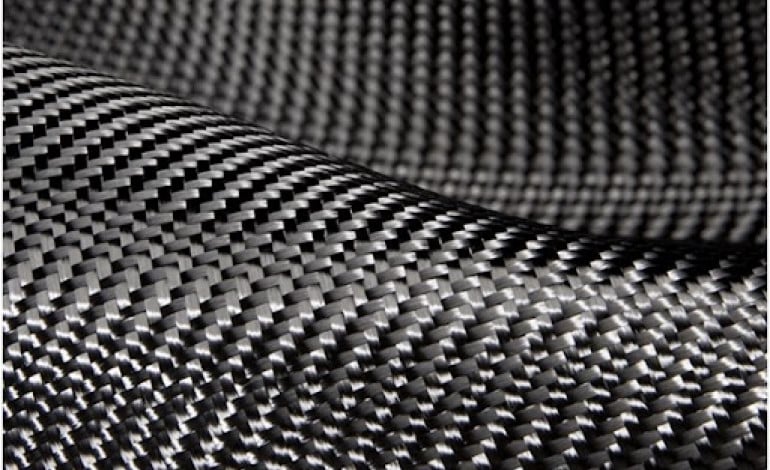Thinking of the most durable, reliable, and versatile material almost instantly alludes to one particular kind: carbon fiber.
Carbon fiber is both a strong and lightweight polymer used in a wide range of applications, from aerospace and aircraft to the manufacturing of toys, golf clubs, and knife handles. It is five times stronger than steel but is just one-third of its weight.
Carbon fiber is a unique and necessary component in countless industries today. While the present forms and usages of carbon fiber are of particular interest, it’s worthwhile to consider the impressive history of the material along with its proposed future. Let’s take a look at carbon fiber’s past, its brilliant present, and its bright future.
Carbon Fiber: Its Surprising Beginnings
Carbon fiber was first invented back in 1860 by a man named Sir Joseph Wilson Swan. Swan was an English inventor, physicist, and chemist who was the early independent developer of the first incandescent light bulb.
Swan had invented carbon fiber in order to use it within an early version of the incandescent light bulb’s filament. He used carbon fiber because its high heat tolerance was ideal, making it a superb electrical conductor. His process of creating carbon fibers for his filaments was so meticulous and impressive that it is still being used by polymer chemists to this very day.
Swan’s lightbulb with a carbon fiber filament was used as a base for Thomas Edison’s patented lightbulb twenty years later. Edison created his light bulb, then patented it in the United States and advertised that he was the inventor of essentially Swan’s invention. In the end, the two compromised: in England, they established the “Edison & Swan Electric Light Company” (a.k.a. “Ediswan”), and in the USA, Edison was given the rights to produce electric lighting.
Eventually, however, the carbon fiber in these filaments was replaced by tungsten, and carbon fiber was rendered obsolete for the next fifty years. It wasn’t until the 1950s when Union Carbide started toying with carbon fiber applications, especially for the military, that it became popularized. From the 1950s to the 1970s, the material was altered and molded to become far more useful.
Carbon Fiber Today
 Today, carbon fiber in its numerous forms is found in a slew of products, big and small, and of varying applications across the globe. Carbon fiber scales, for one example, are utilized as the primary material in knife handles. Carbon fiber sheets are used in numerous industries, such as in automobiles, aircraft, robotics, medical, drones, and consumer products.
Today, carbon fiber in its numerous forms is found in a slew of products, big and small, and of varying applications across the globe. Carbon fiber scales, for one example, are utilized as the primary material in knife handles. Carbon fiber sheets are used in numerous industries, such as in automobiles, aircraft, robotics, medical, drones, and consumer products.
Carbon fiber fabrics also come in numerous weaves, which therefore affect their appearance and functionality. A 3k fabric, for one example, has 3,000 strands of carbon fiber fabric. Carbon fiber sheets (or composites) are created from these fabrics.
Carbon fiber scales, sheets, fabrics, and other variants provide countless advantages to the overall product in which they are used. It is exceptionally lightweight in comparison to its level of strength, has a low thermal expansion, is resistant to corrosion, is electrically conductive (just like it was when it was first invented), and is even resistant to ultraviolet light.
Today, carbon fiber is found in countless products, some that we use daily and some that we use on very specific occasions. Carbon fiber is found in items like bicycles, golf clubs, softball and baseball bats, spacecraft, wind turbine blades, vehicles (even racecars), umbrellas, electronic devices, cell phone cases– the list goes on and on.
What’s in Store for Carbon Fiber in the Future?
The future of carbon fiber is exciting and is continually evolving. Carbon fiber is an undeniably and remarkably versatile material that could even last a lifetime in the right conditions. However, there are some current issues with carbon fiber that look to be altered in the future for our betterment.
One of the most major issues that befalls carbon fiber is its cost for manufacturing. In fact, it is one of the most expensive highly-durable materials to create. However, there is hope for carbon fiber in the future in this regard, as the price for it has drastically decreased in the last five years alone as carbon fiber in all of its forms has increased in popularity.
The next few decades in particular look to provide us with carbon fiber that is easily accessible, more cost-effective, and still extremely reliable, strong, and lightweight.
Purchasing Carbon Fiber for Your Business
Carbon fiber is no doubt a material worthy of extreme merit and even consideration for nearly any business. When you are looking for the most reliable carbon fiber scales, sheets, and more for your desired goals, work with us here at Protech Composites Inc. where we guarantee no pinholes, voids, or porosity ever because your satisfaction is our satisfaction.

